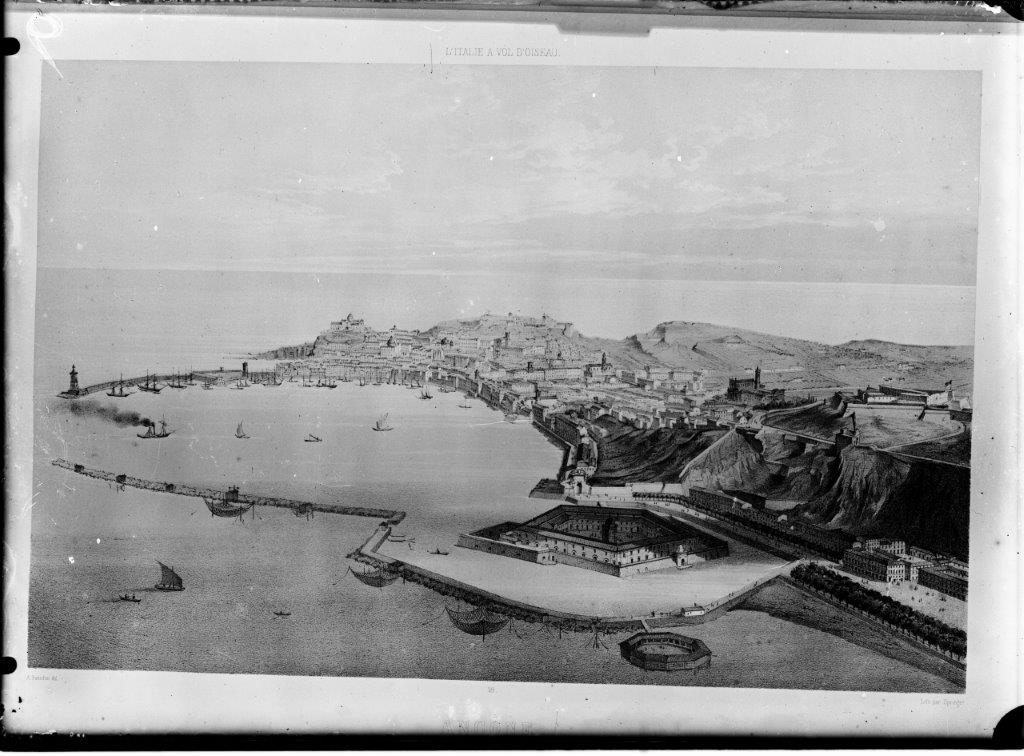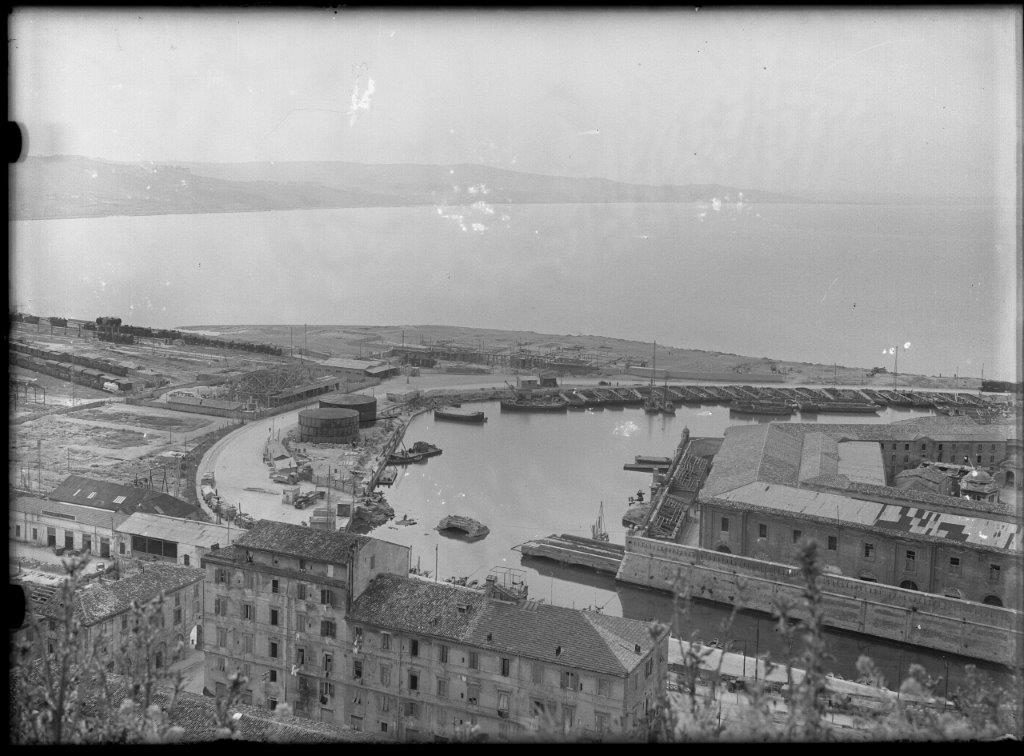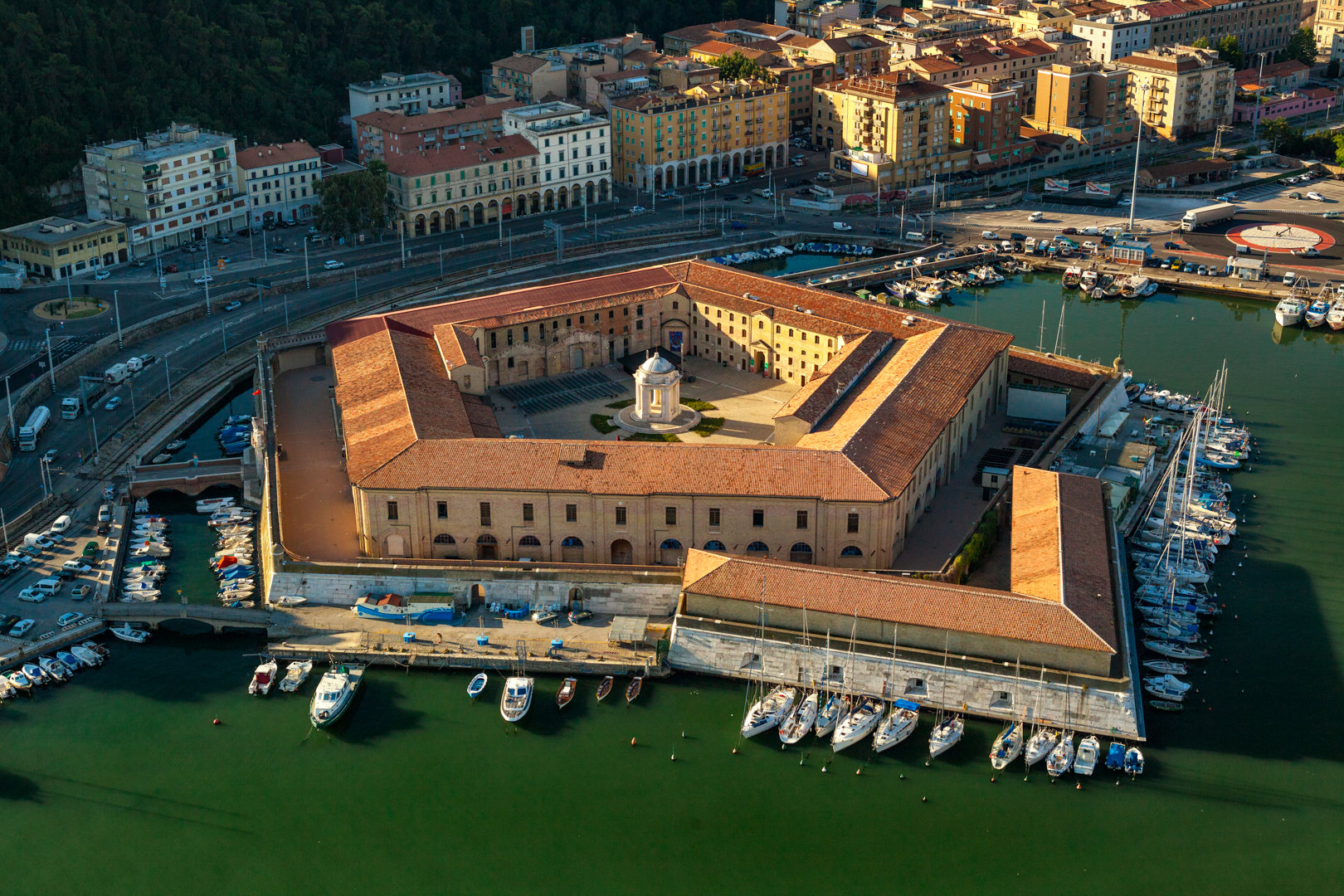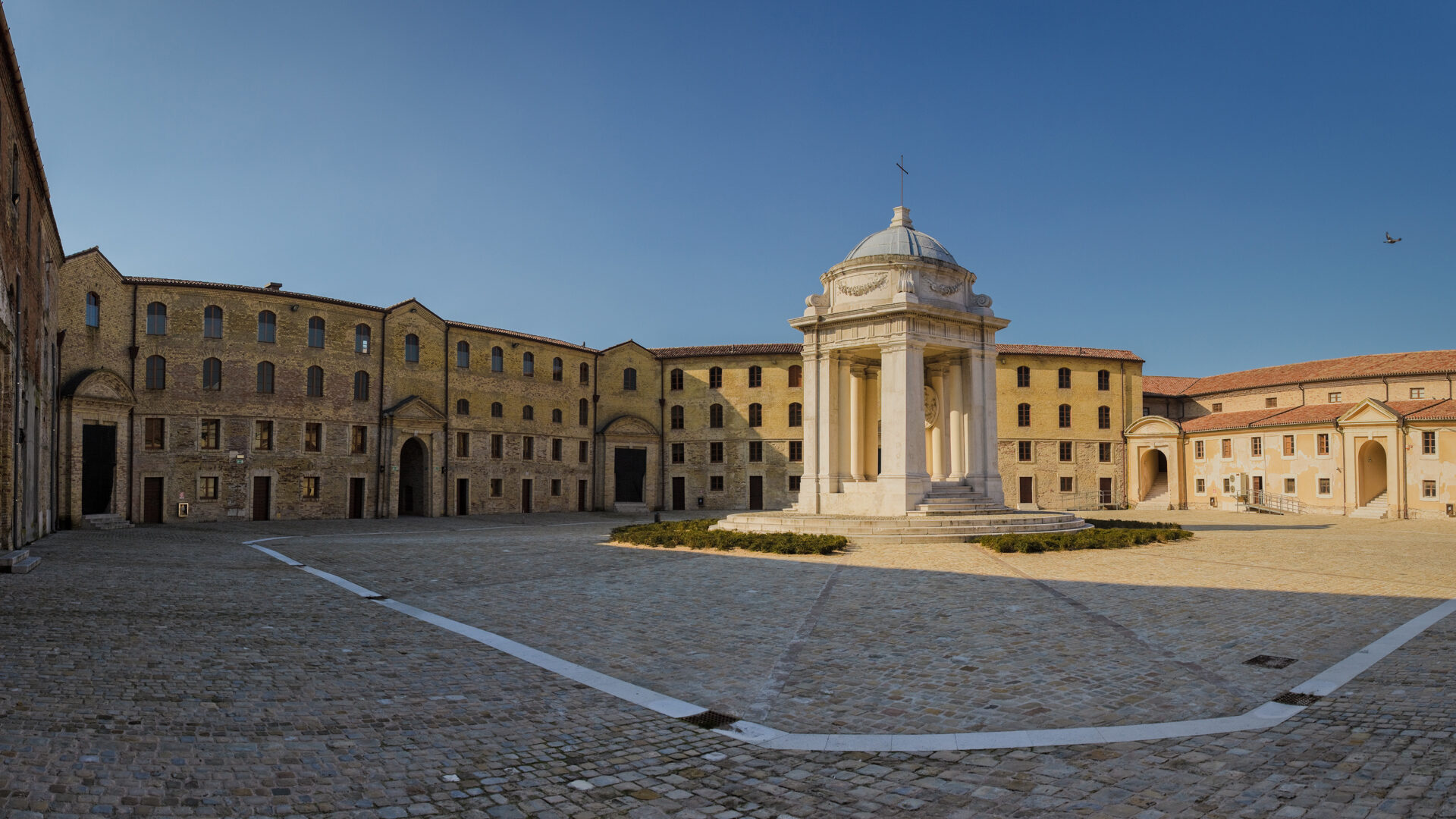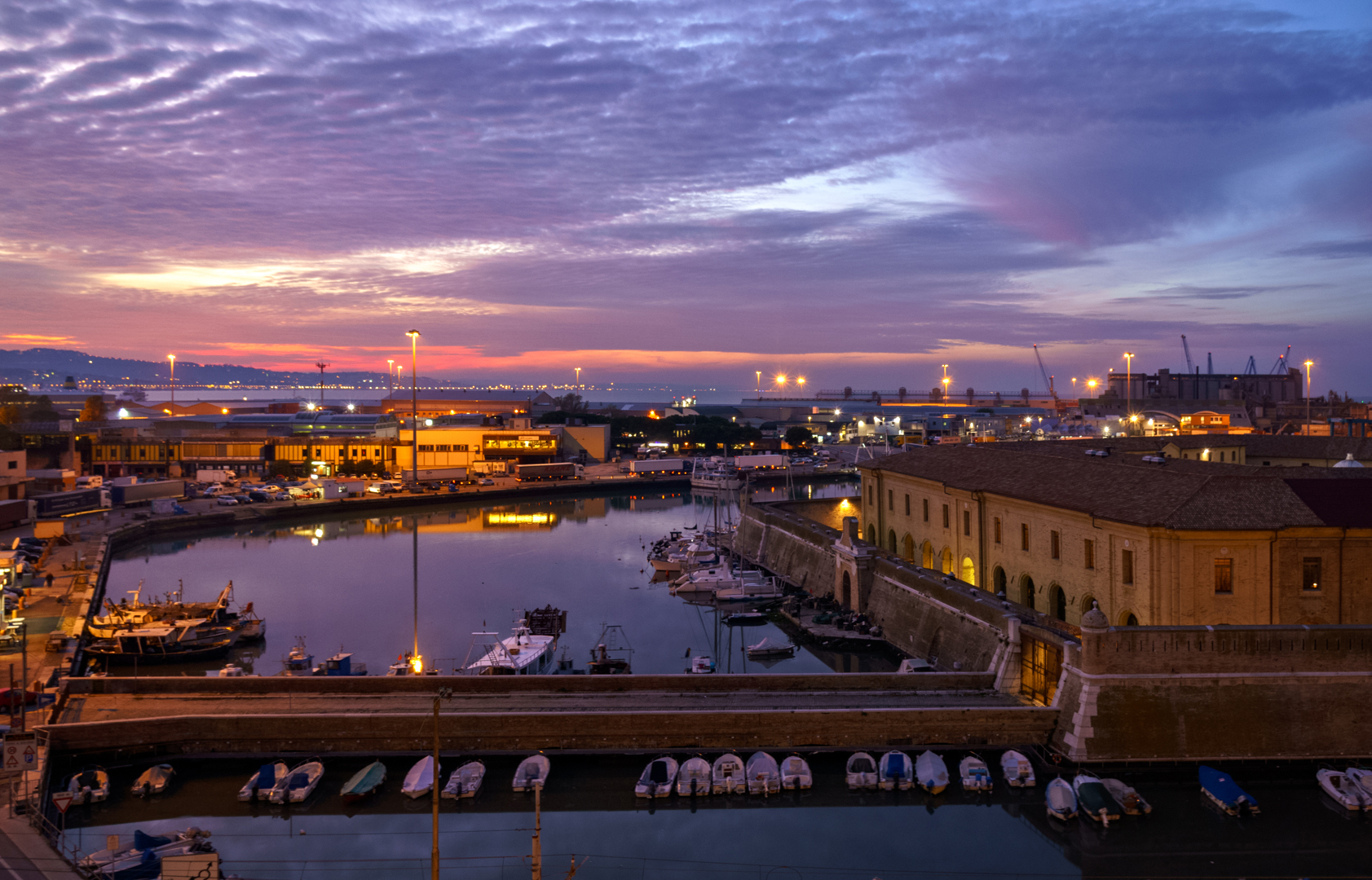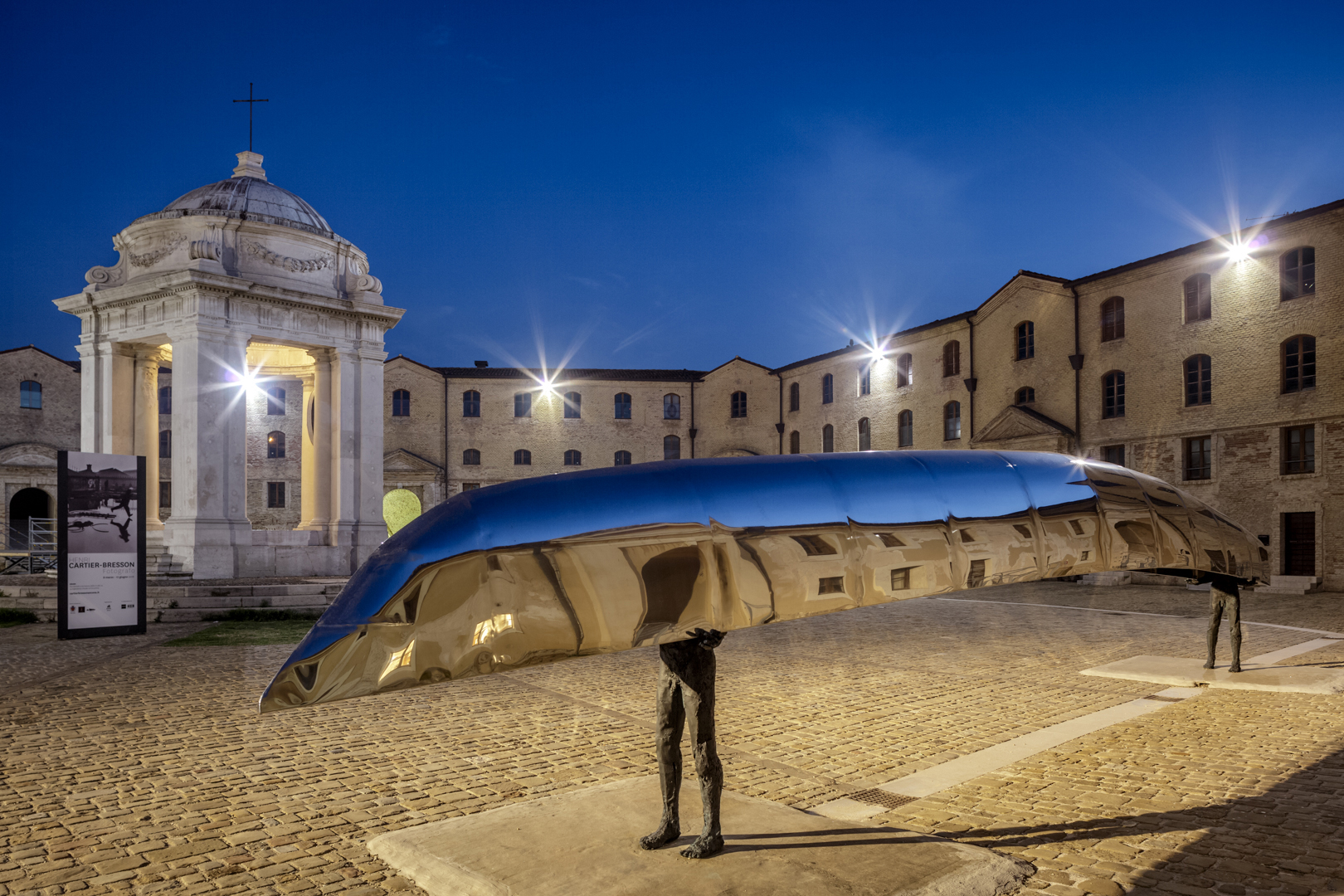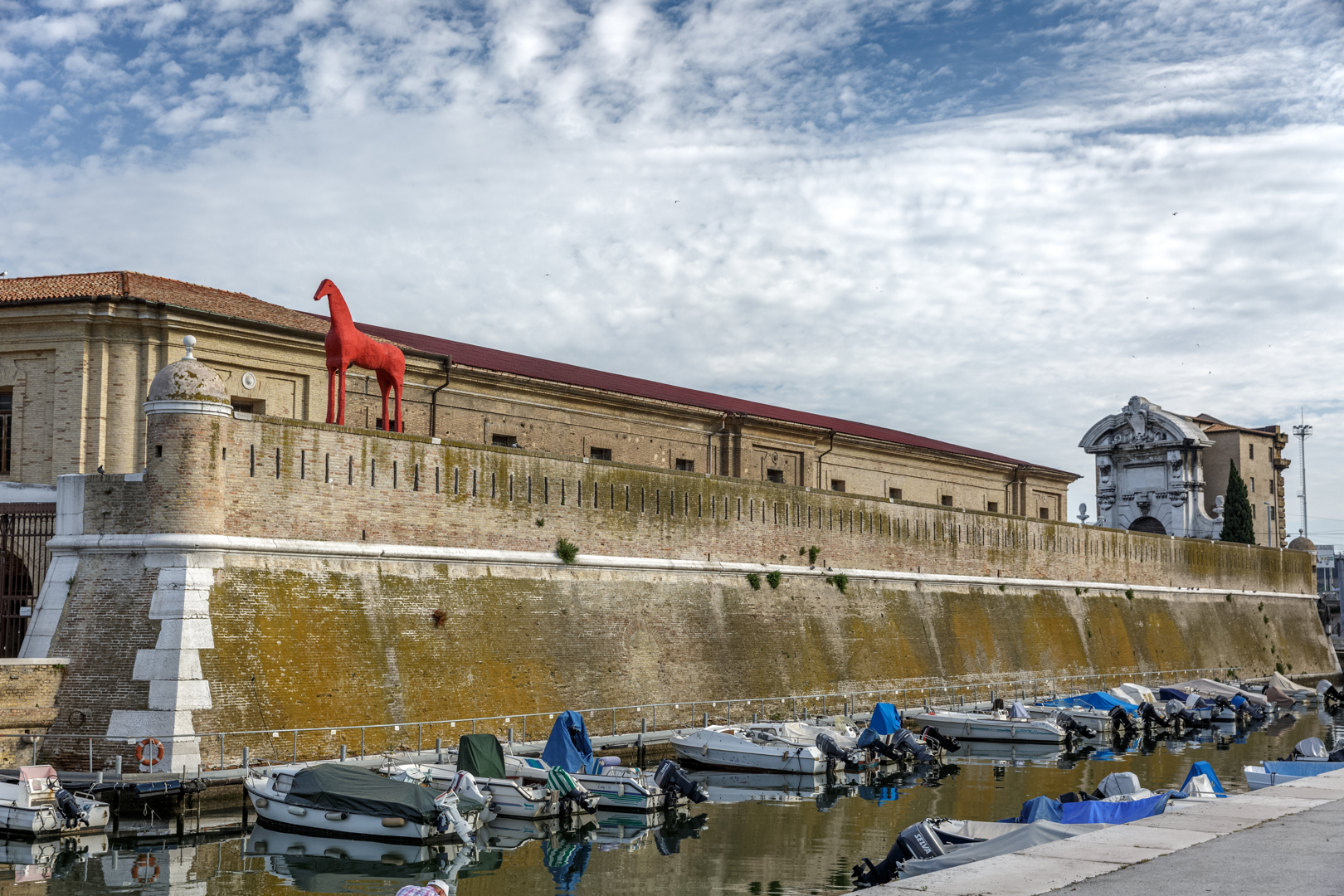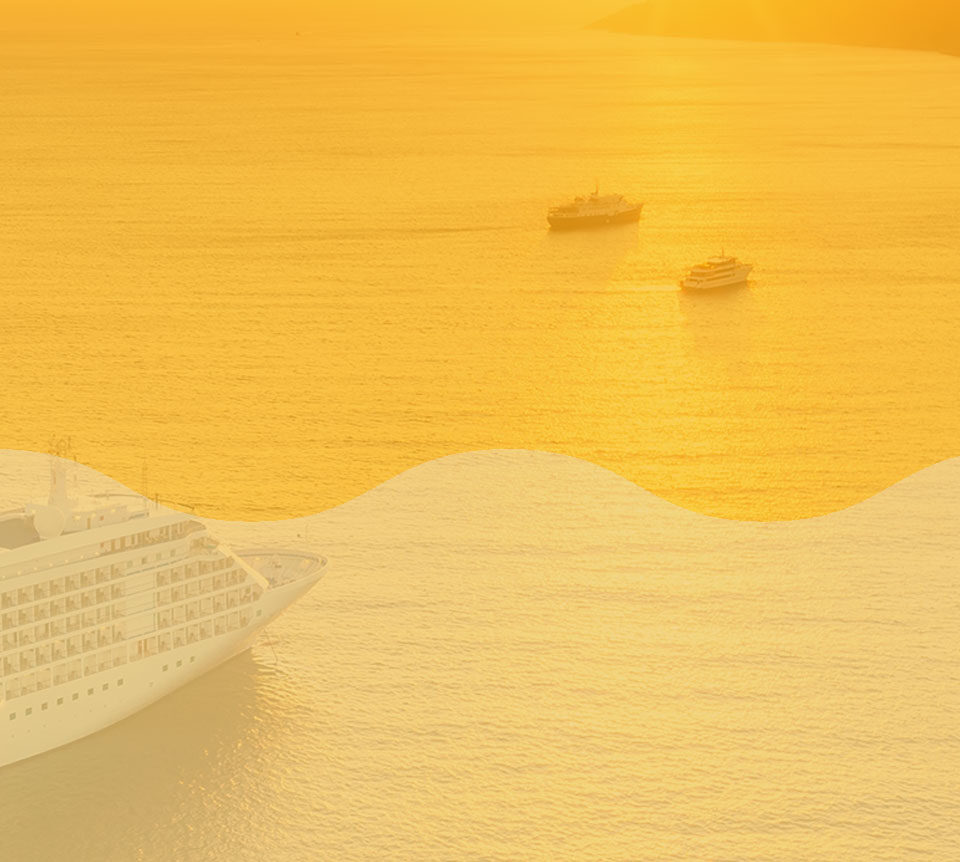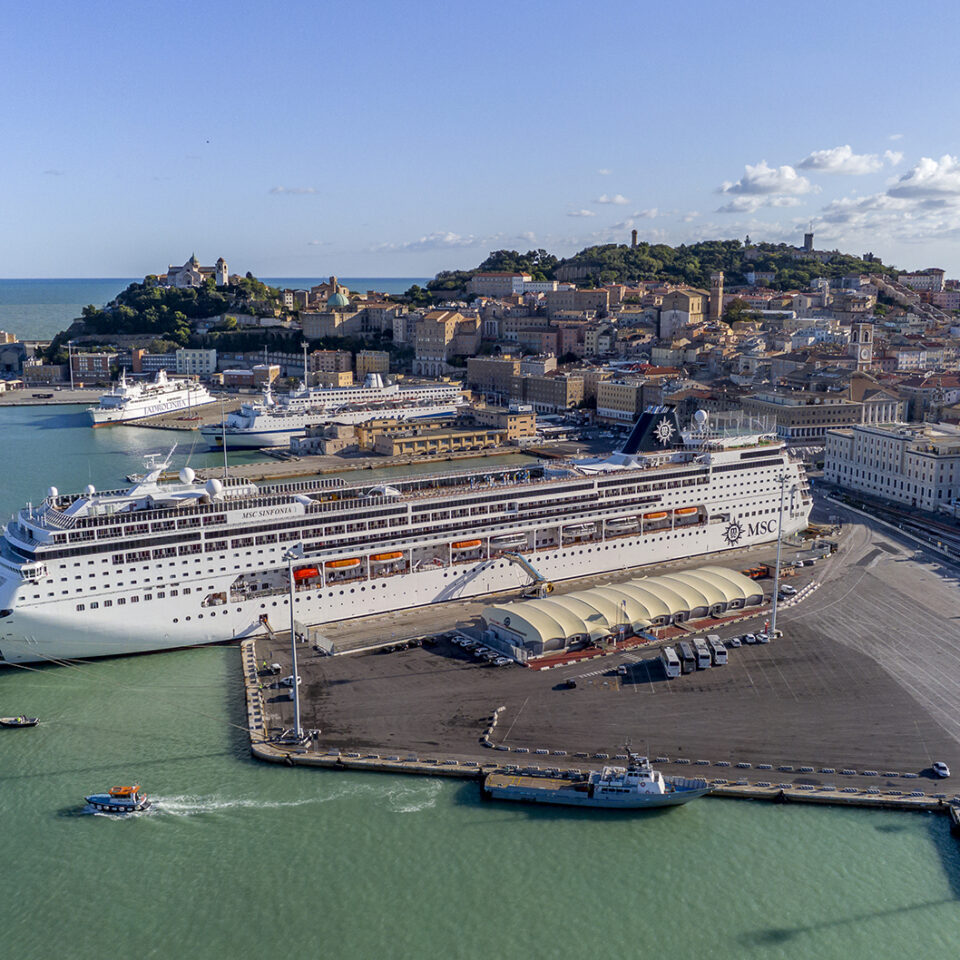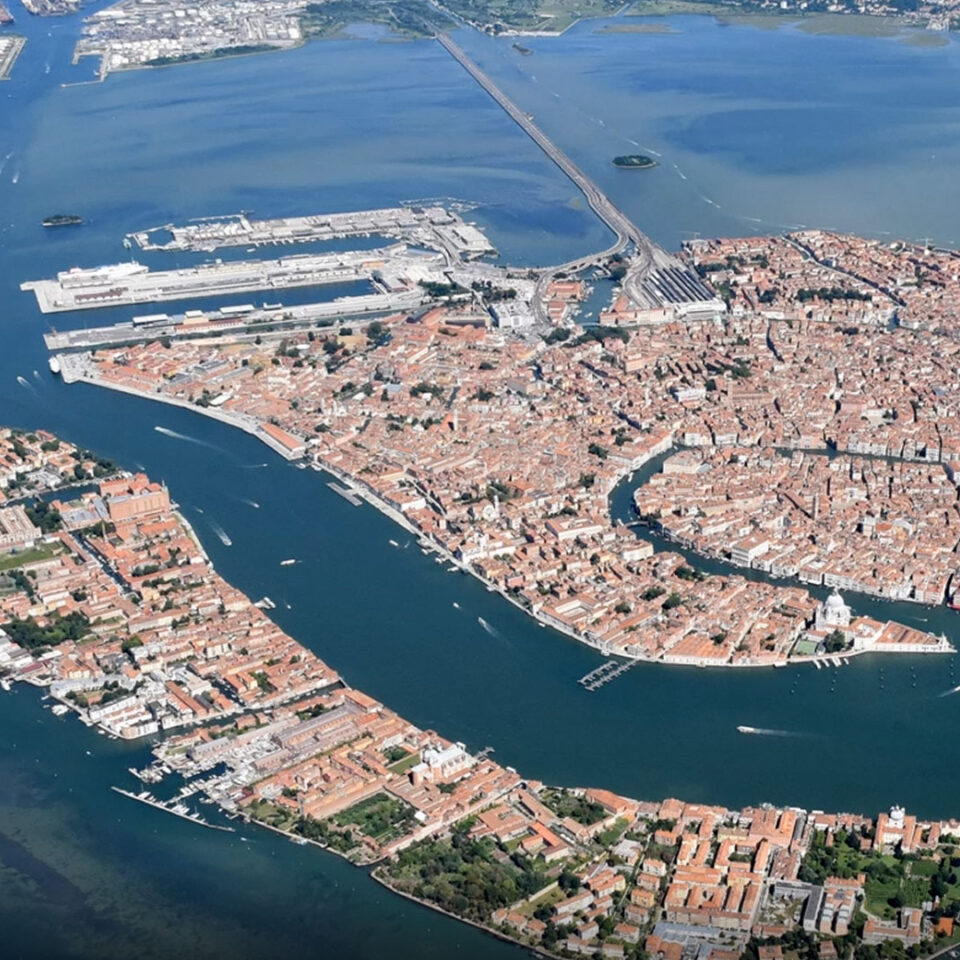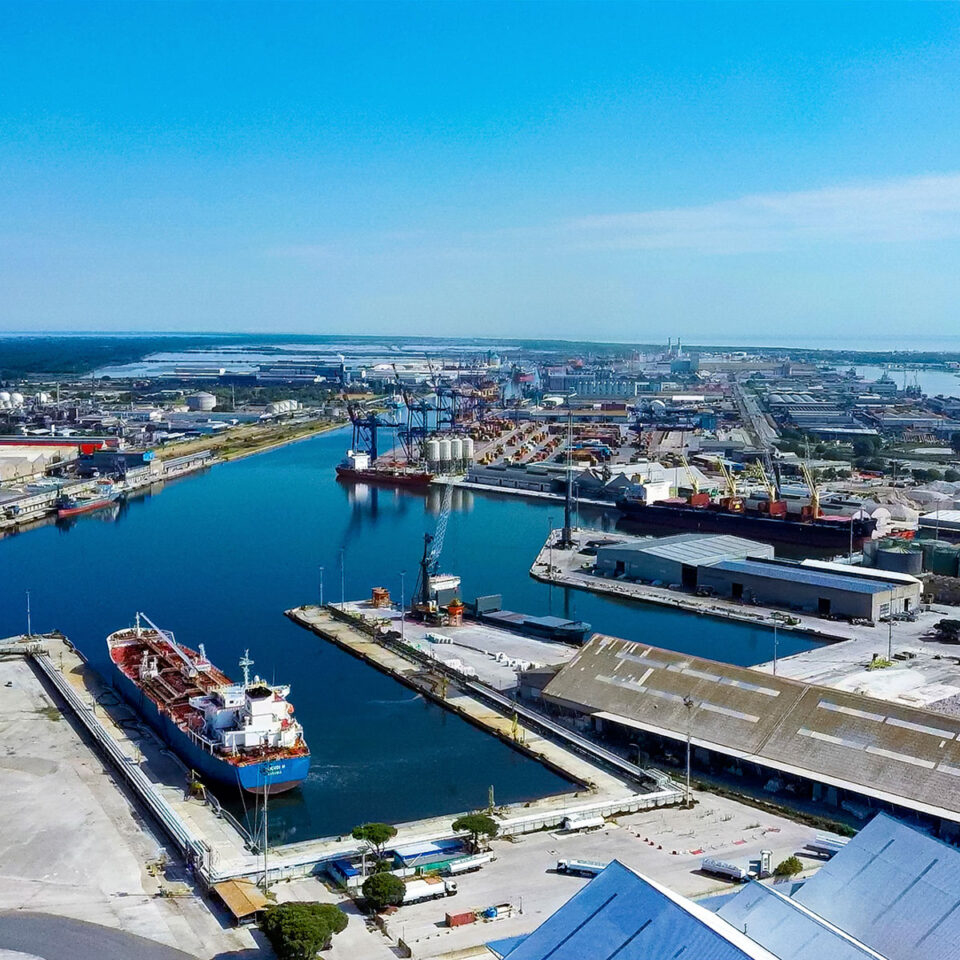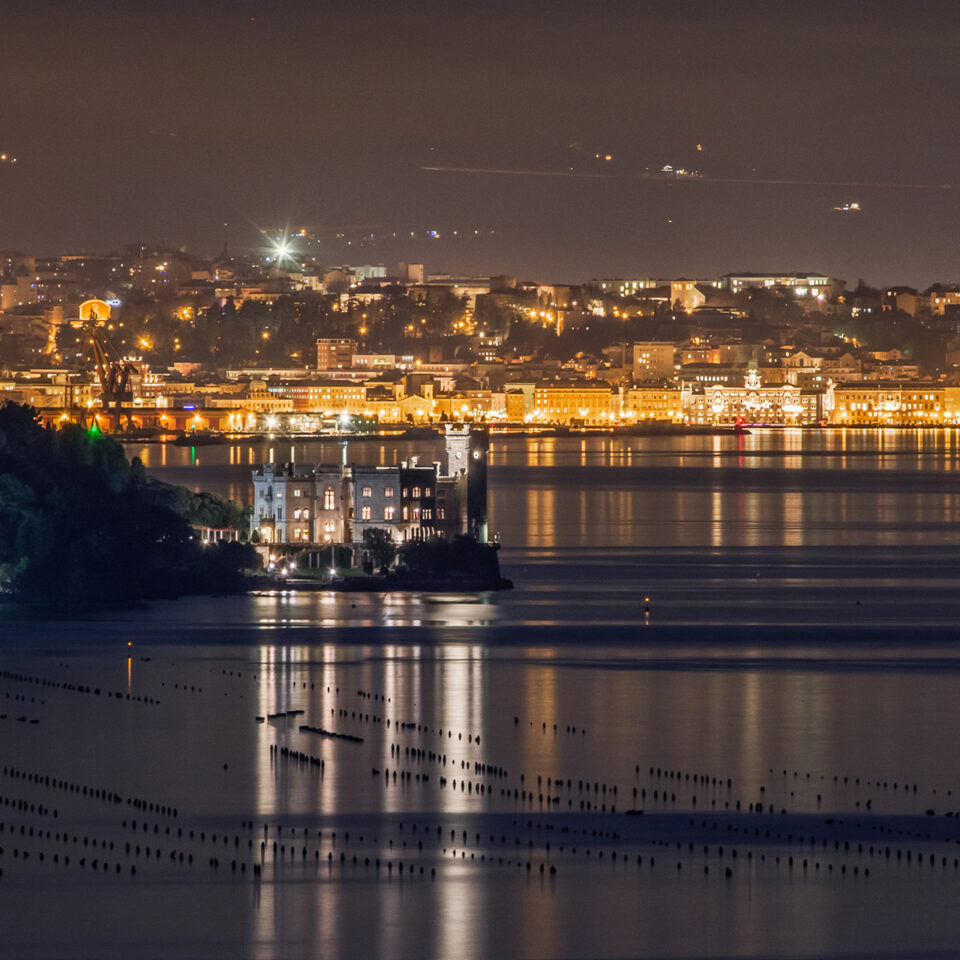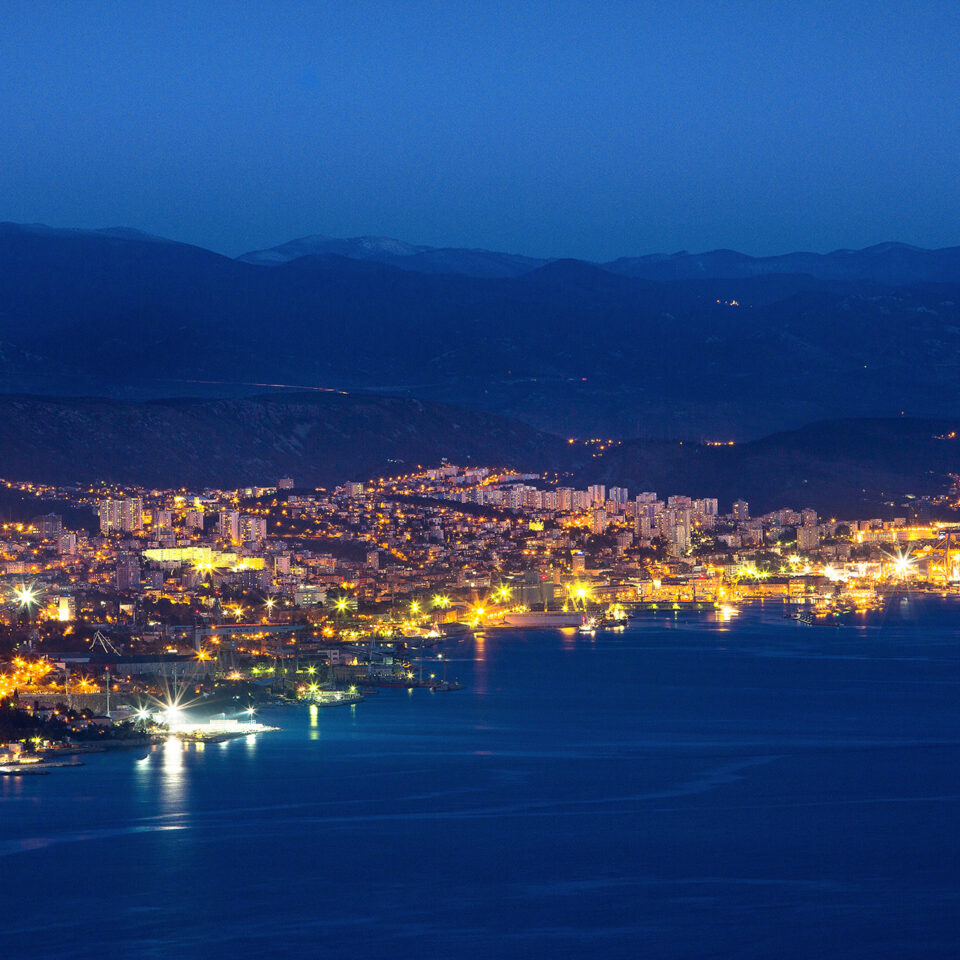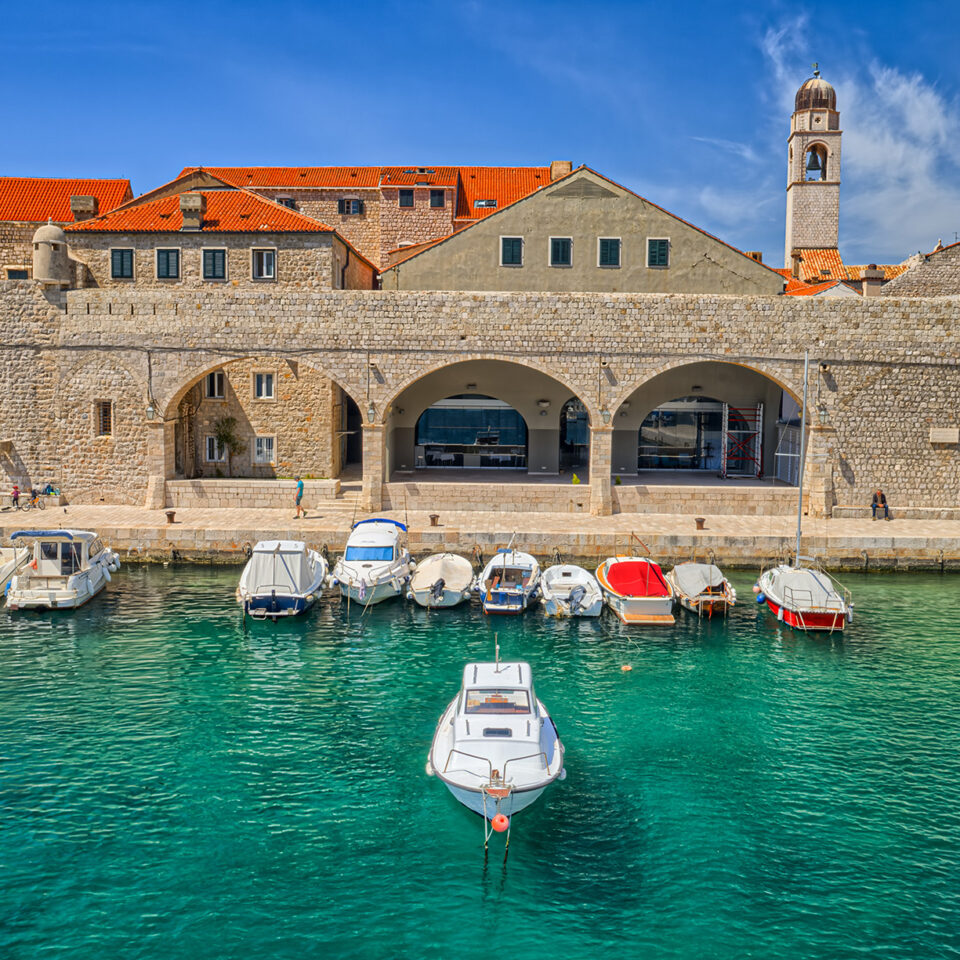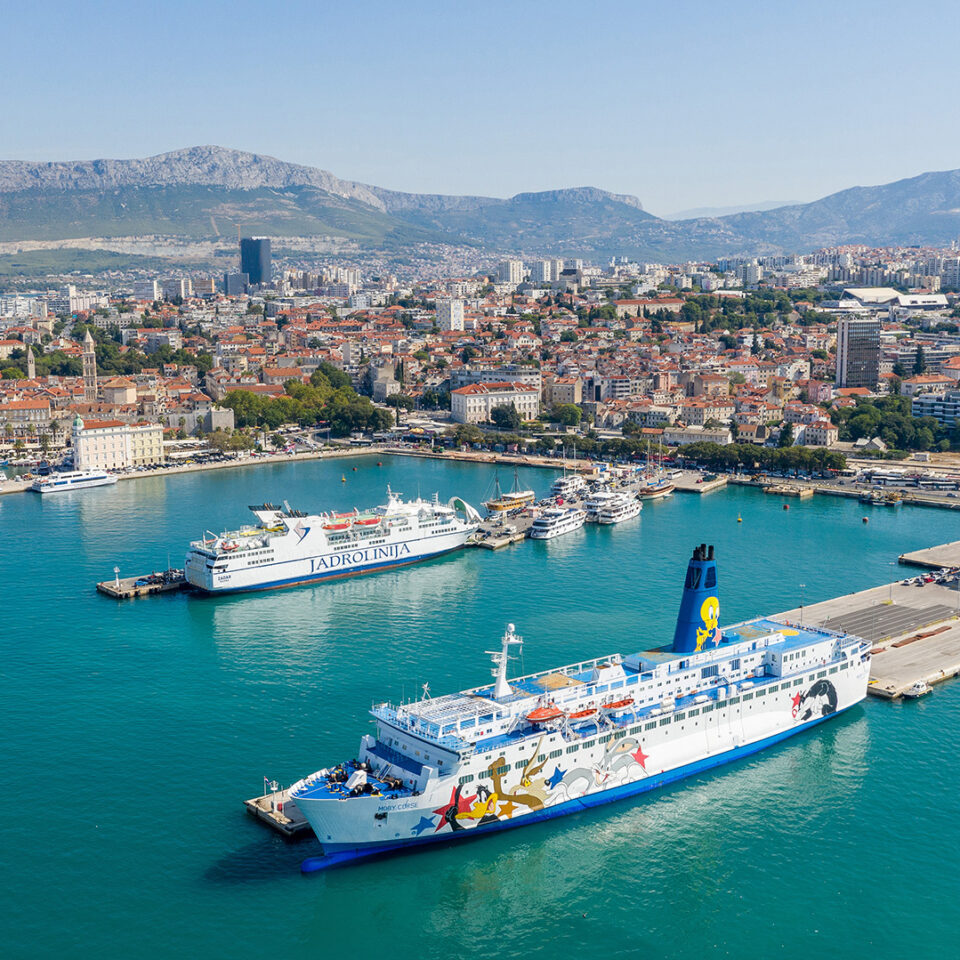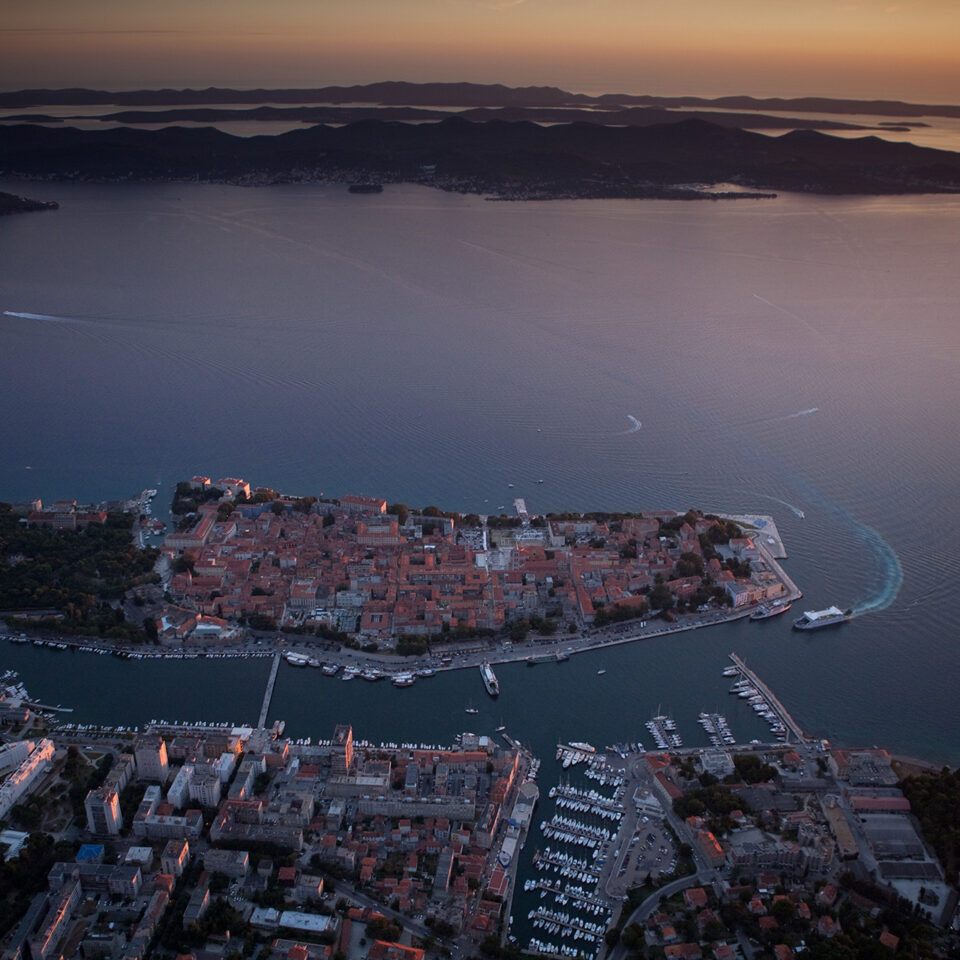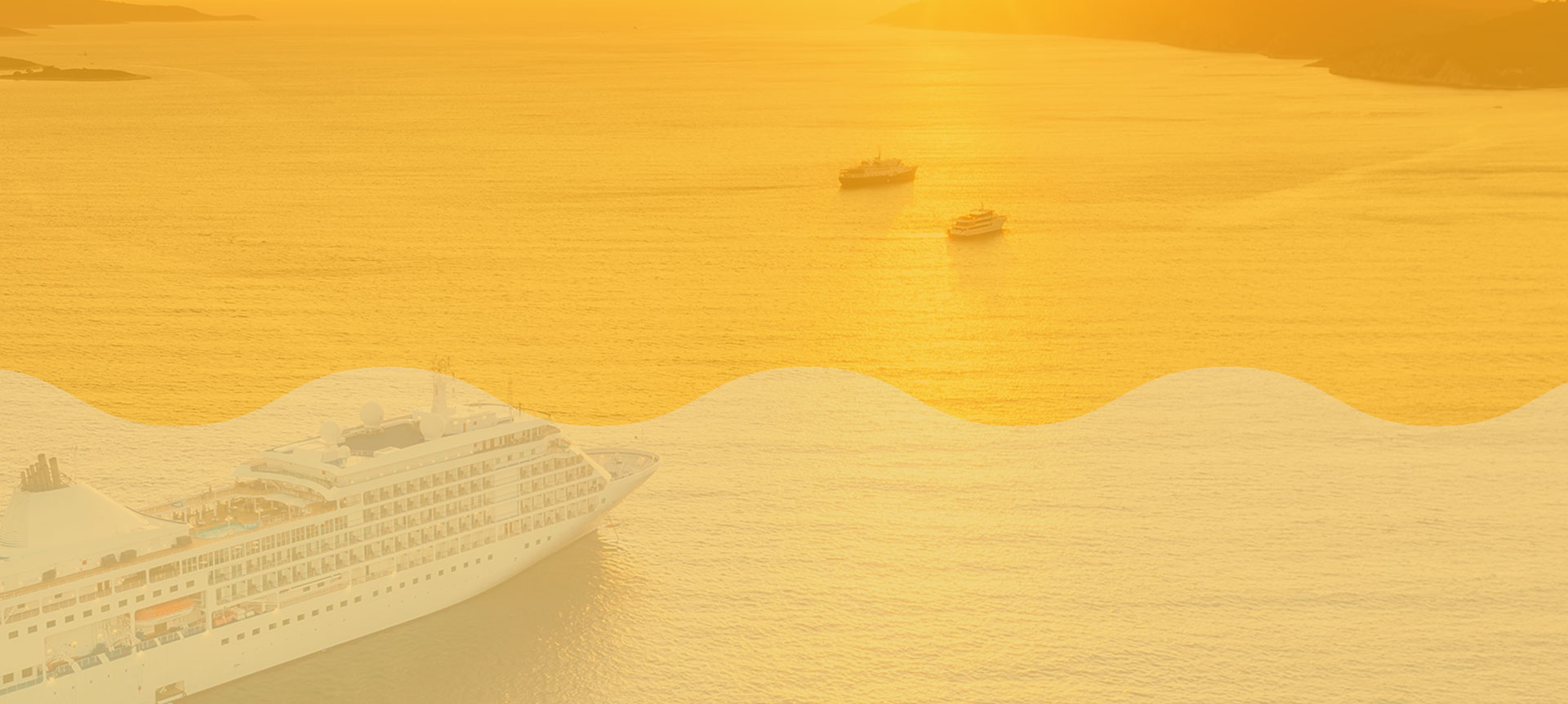


THE MOLE VANVITELLIANA
A port of places, people, and work; a port of monuments and rituals, faces, stories, and tradition; a port of identities, languages, perspectives, and local memories. Commissioned by the Central Adriatic Port Authority, Gian Luca Favetto (Turin, 1957), Italian poet, journalist, writer, and playwright, offers us an author’s view of the Doric port. He writes for the newspaper Repubblica and is a longstanding voice of Radio Rai. He is the creator of the project Interferenze fra le città e gli uomini. Among his most celebrated works: Se dico radici dico storie, the poem collection Mappamondi e corsari, the audiobook I nomi fanno il mondo, the novel La vita non fa rumore, and the short story Un’estrema solitudine.
Text: Cristiana Colli
THE MOLE VANVITELLIANA
by Gian Luca Favetto
What is that building, that bulwark, that wall? Is it a diversion, perhaps? An installation? An esoteric geometric figure? A birthing room for future ideas? Or an extinguished star that fell into the sea and ran ashore here, inside the port? What is it? A warehouse, a quarantine station, a leper hospital, a fortification that holds the humidity of centuries past?
According to the legend, often chronicled by men as if it were History, the building was designed in the early 1730s by architect Luigi Vanvitelli and built over a period of ten years on a pentagon-shaped artificial island with a surface of twenty-thousand square metres. It is known as the “Lazzaretto” but it is also called Mole Vanvitelliana – after all, not a single place in Ancona is known by one name. The canal separating the Mole from the mainland, to which it is connected by means of three bridges, is the mandracchio, a small sheltered harbour where boats are moored. The most recent conservation was carried out in 1997.
So what is this Mole, the product of a bold imagination, a terrace overlooking the sea, a platform and a vanishing point all in one?
At times it would be a good idea for us to look at things with the eyes of the Little Prince, the childlike spirit that an inhabitant of the sky such as Antoine de Saint-Exupéry – aviator and poet – saw in each and every one of us and set free in a book.
And so the Mole, designed by the famous painter and architect Luigi Vanvitelli, master of Rococo, born in Naples to a Dutch father and raised in Rome, who unleashed his talent in Ancona, where he redesigned the port, built the Molo Nuovo, the Porta Clementina, the Chiesa del Gesù facing the port, the chapel for the relics in the Cathedral of St. Cyriacus, Palazzo Bourbon del Monte, and oversaw the renovation of the Chiesa di Sant’Agostino… And so the Mole is the anchor of the port.
But is it a physical anchor or a metaphorical one? Is it what moors the port to the city or, conversely, is it an extension of the port, one end leading into the city and out to sea at the other?
For sure it can be both things at once. And it is an accumulation of functions as well: aside from a warehouse, a leper hospital, and an outpost, it has been a hospital, a sugar refinery, a military citadel, a tobacco deposit; and today it is a public space, a location for shows and events, for performances and ideas. It is a small town unto itself, with roads, walkways, buildings, halls like town squares, offices, lodgings, arches, doors, stairways, a tiny temple, and even a café and a sports club.
It is the heart of the port, and at the same time it’s a pivot, a place where space and time are shared: it connects the port to the city, the past to the future – and the union of past and future produces the present in which we live.
In any event, it possesses the features of a conjoining structure: it functions as a mooring for thoughts and as a theatre for the stories in which the city recognises itself.

